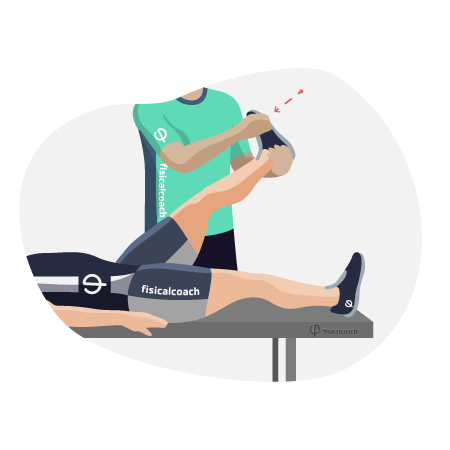
Laségue test, signs of Bragard and Bonnet
The Laségue test is a test used to assess the symptoms of low back pain due to nerve root irritation or a herniated disc in the lumbar region (especially at L4-L5).
- Required material: A physiotherapy table. The test can be performed directly from the floor on a mat or matting.
- Procedure:
- Laségue test: The test starts with the subject lying supine (face up) on the couch. The assessor stands to one side of the subject and raises the lower limb slowly by grasping the heel while the subject’s knee remains in extension throughout the manoeuvre.
- Bragard’s sign and Bonnet’s sign: The same procedure is performed. However, if pain or tension appears at a certain angle, the angle should be modified until it disappears. At that level, dorsal flexion of the foot should be performed.
- Assessment: The test is considered abnormal or positive when any pain or discomfort is manifested throughout the manoeuvre, indicating nerve root or intervertebral disc disruption. Laségue test: If the pain manifests itself above 70º, it could indicate a pathology in the lumbar region. Bragard’s sign: If the pain manifests itself between 35º-70º, it could indicate nerve root or intervertebral disc involvement (radicular compression of L4-L5). Bonnet’s sign: If the pain manifests itself in the first 35º, it could indicate an involvement of the sciatic nerve, with the sacroiliac joint and the pyramidal muscle as the cause. If no pain is present the test is considered normal or negative.
- Remarks: The Laségue test may be performed crosswise (contralateral), to aid in the exploration of a hernia at the intervertebral level.
Take this test and 139 more in our App